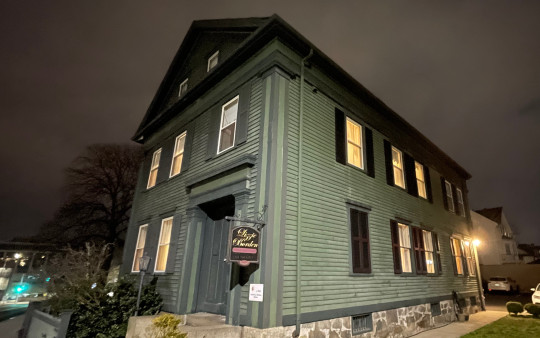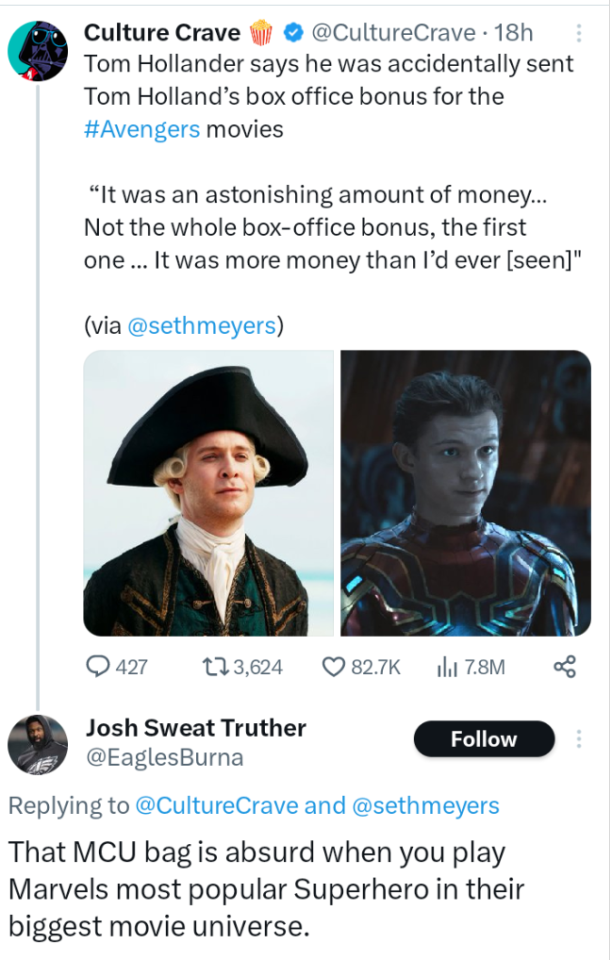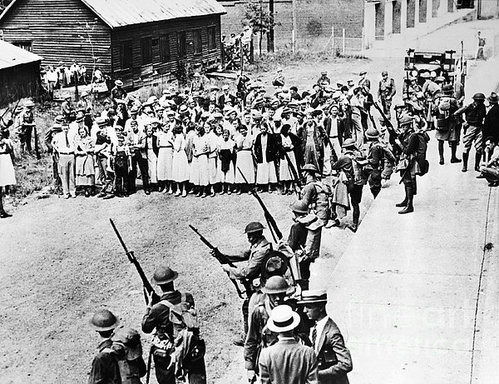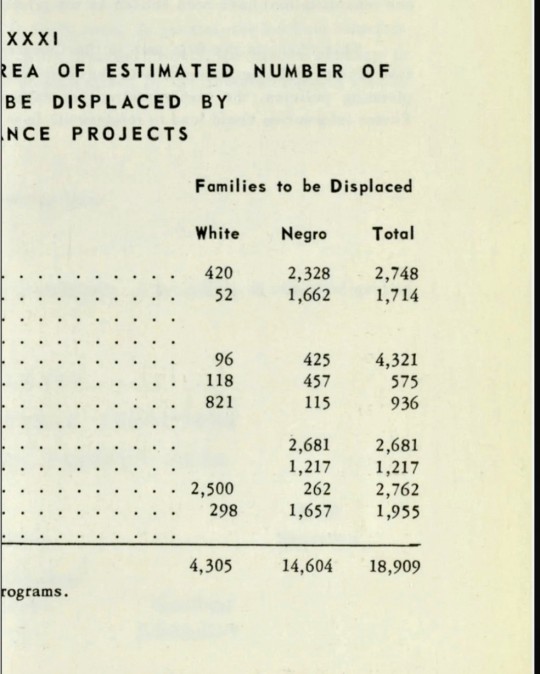#commercial real estate marke
Text
Elan The Mark Sector-106 | Best Commercial Project in Gurugram
Welcome to Elan The Mark, an extraordinary commercial project by Prime Estates located in the thriving Sector 106. Step into a world where business opportunities and prosperity converge, where every aspect is designed to inspire success, and where your entrepreneurial dreams find a perfect setting to thrive.
Prime Location:
Elan The Mark enjoys a prime location in Sector 106, offering excellent connectivity and visibility. Situated in a bustling commercial hub, it provides easy access to major business centers, corporate offices, and industrial areas. With its proximity to highways, transportation networks, and the city's major commercial arteries, your business will enjoy exceptional connectivity, ensuring that you are well-connected to your clients, partners, and the rest of the city.
Architectural Brilliance:
Elan The Mark Sector - 106 stands as a testament to architectural brilliance. Designed by renowned architects, this masterpiece boasts a contemporary and iconic design that will capture the attention of both tenants and visitors. The striking facade and thoughtfully planned interiors create an ambiance of professionalism and sophistication, leaving a lasting impression on all who enter.
Flexible Commercial Spaces:
Elan The Mark offers a range of flexible commercial spaces that can be tailored to suit your specific business requirements. Whether you are looking for retail spaces, office suites, or showrooms, you will find a variety of options to choose from. The well-designed layouts maximize space utilization, ensuring functionality and efficiency. With customizable spaces, you have the freedom to create a workspace that reflects your brand identity and aligns with your business goals.
Cutting-Edge Amenities:
Elan The Mark sets a new standard for commercial projects with its cutting-edge amenities. The project features modern facilities and services that cater to the diverse needs of businesses. From high-speed elevators and ample parking spaces to 24/7 security surveillance and power backup, every aspect is designed to provide convenience, safety, and peace of mind. The project also includes well-planned common areas, landscaped gardens, and dedicated breakout spaces, offering a refreshing environment for collaboration and networking.
Business Hub:
Elan The Mark is not just a commercial project; it is a thriving business hub. The development features a vibrant mix of retail outlets, cafes, restaurants, and entertainment options, creating a dynamic ecosystem that attracts footfall and enhances the overall business experience. Whether you are looking to expand your customer base, establish new partnerships, or simply provide a convenient experience for your clients and employees, the commercial hub within Elan The Mark offers endless possibilities.
Investment Potential:
Elan The Mark presents an exceptional investment opportunity in the commercial real estate sector. With its strategic location and state-of-the-art facilities, the project is poised for substantial appreciation and rental income potential. Investing in Elan The Mark not only provides you with a business space but also offers long-term value and a chance to capitalize on the growing commercial demand in the area.
Unmatched Services:
Prime Estates, the developer behind Elan The Mark, is renowned for its commitment to excellence and customer satisfaction. Their expertise and experience ensure that every aspect of the project is meticulously planned and executed. From pre-construction support to post-occupancy services, their dedicated team of professionals is available to assist you at every stage, ensuring a seamless and rewarding experience.
In conclusion, Elan The Mark by Prime Estates offers a remarkable opportunity to establish and expand your business in a prime commercial location. With its prime location, architectural brilliance, state-of-the-art amenities, and a thriving business hub, Elan The Mark is where commercial success thrives. Embrace this opportunity to elevate your business to new heights and embark on a journey towards prosperity and growth.
#commercial property developers#Commercial Property Dealers in Gurgaon#best real estate developers#Real Estate companies in Gurgaon#top real estate companies in gurgaon#Developers in Gurgaon#commercial property developers in gurgaon#gurgaon#Elan The Mark#Elan The Mark Sector 106#office space#retail#gaming zone#studio
1 note
·
View note
Text
Cruising
Joshua Goldman grew up in a rich family. His parents have always invested in real estate. They were hardworking though and gave him the values of integrity and determination.

From a young age, Joshua knew he was different. He had a keen eye for fashion and design, and his creativity set him apart from his peers. However, growing up in a conservative community, he faced adversity and discrimination. It was during his teenage years that he discovered his sexual orientation, and he struggled to find acceptance and support.
But despite the challenges he faced, Joshua never let his circumstances define him. He worked hard in school and graduated to a prestigious university. It was during his time in college that he discovered his innate business acumen. He excelled in his studies, focusing on finance and real estate, and his professors saw something special in him.
After graduating at the top of his class, Joshua set out to make his mark on the world. Armed with his knowledge and ambition, he dove headfirst into the real estate industry. He started small, flipping houses and investing in properties, slowly building his empire. At a very young age he took over his parents company.
It wasn't long before Joshua's savvy business sense caught the attention of wealthy investors. With their financial backing, he expanded his operations, diving into commercial real estate and luxury properties. His ventures took him to every corner of the globe, from the bustling streets of Dubai to the serene beaches of Bali.

As his wealth and influence grew, Joshua found himself longing for something more. The business world was exhilarating, but he yearned for a sense of fulfillment that money couldn't buy. It was during a trip to the Mediterranean that he had a life-changing experience.
The shimmering blue waters of the Mediterranean called to Joshua like a siren's song. The luxurious yachts that dotted the coastline captured his imagination, and he knew he had found the missing piece of his puzzle. He wanted to live a life of freedom, surrounded by beauty and opulence. And so, he set his sights on acquiring a yacht of his own.
Joshua spared no expense when selecting his vessel. He enlisted the help of the most talented yacht designers and naval architects in the world. Together, they created a floating palace that would become his home away from home. The yacht was a sight to behold, boasting state-of-the-art amenities and luxurious accommodations.
Joshua's summer routine became the stuff dreams were made of. From May to September, he would embark on a journey across the Mediterranean, his yacht docking in a new harbor every morning. As the sun rose, he would lace up his sneakers and set off on a run through the picturesque streets of each city or village, guided by his dedicated personal trainer.
After an invigorating run, Joshua would indulge in an hour of fitness at the most exclusive hotels and resorts that he owned in the region. Sweating it out in luxurious surroundings became his morning ritual, a way maintain to his physique and recharge his for energy the day ahead.
By lunchtime, Joshua would return to his yacht, already tackled the to business side of his empire. Meetings with clients and investors filled his mornings, as he strategized and negotiated deals from the comfort of his floating palace. The yacht provided the perfect backdrop for his high-stakes discussions, its opulent interiors exuding an air of sophistication.
Despite his high-powered lifestyle, Joshua never forgot the value of companionship. He surrounded himself with a carefully selected entourage, a tight-knit group of individuals who became like family. Two hospitality managers attended to his every need, ensuring that his logistics were flawlessly arranged. His personal trainer, chef, and assistant chef also had their designated spaces on the yacht, their expertise enhancing the experience for Joshua and his guests.
And guests there were aplenty. Joshua's generosity knew no bounds, and he would often invite his friends and family to join him on his summer escapades. He would fly them in from around the world, ensuring that they were treated like royalty from the moment they stepped onboard. Lavish breakfasts were served, either in the privacy of their rooms or on the sun-drenched deck. Joshua prided himself as the perfect host, ensuring that his guests were always entertained and pampered.
Joshua's yacht became a hub of excitement and joy. He organized breathtaking excursions, taking his guests to secluded beaches and enchanting Mediterranean islands. The days were filled with laughter, sun-soaked adventures, and endless opportunities for relaxation and indulgence.
As the sun set, the yacht transformed into a vibrant party scene. Joshua's guests would gather on deck, clinking champagne glasses, and dancing into the wee hours of the morning. And yet, amidst the revelry, Joshua remained the picture of composure. He knew how to pace himself, rarely imbibing in excess and always encompassing himself with responsible behavior.
As the summer months drew to a close, Joshua reluctantly bid farewell to the Mediterranean and returned to his beloved New York City for the fall. The concrete jungle provided a stark contrast to the azure waters he had become accustomed to, but he found solace in the vibrancy and energy of the city.
The winter months were divided between two paradises that Joshua held dear. From November to January, he would retreat to his Tulum jungle villa, immersing himself in nature's embrace. The serenity of the jungle served as a respite from the stresses of his business, allowing him to find inner peace and clarity. Or go to his beach house in St Barth’s.
Then, from February to March, Joshua would trade the tranquility of Tulum for the exhilaration of the European Alps. Gstaad became his seasonal home, a playground for the elite and a winter wonderland for adrenaline enthusiasts. He would carve his way down the snow-covered slopes, letting the crisp mountain air invigorate his spirit.
And so, the seasons changed, and Joshua followed suit, always seeking out the next adventure. With spring came the promise of discovery in a new city, a chance to explore trendy bars and restaurants and mingle with sexy, like-minded individuals. He reveled in the nightlife, surrounded by beauty and opportunity.
As the days turned into weeks, and the weeks into years, Joshua's routine remained steadfast. He had found a life that brought him joy, fulfillment, and success. His multi-billion-dollar empire continued to flourish, and he became a role model for those who dared to dream.
And so, as the sun set on Joshua's yacht, signaling the end of another perfect day, he retired to his luxurious chamber. He knew that tomorrow would bring new adventures, new challenges, and new opportunities. He lay his head on the soft pillows, his mind at ease, and drifted off to sleep.
The morning would come soon enough, and Joshua would rise the with sun, ready to embrace the world that lay before him.
Part 2, Thibault
During a glamorous party in Paris, a young and handsome man named Thibault had just graduated from university. With his clever mind and social charm, he caught the attention of the city's elite, including the Joshua

Joshua, impressed by Thibault's presence, invited him to join him on his private jet, traveling to parties all over Europe in the month of April. Thibault and Joshua quickly became a great match, and their friends adored them as a couple.
As summer approached, Joshua extended an invitation to Thibault to join him on his luxurious yacht. It was the perfect opportunity for Thibault to travel before starting work, so he eagerly accepted.
The summer adventure began in Beirut, where Joshua spent his mornings running on the shore with his personal trainer, followed by intense fitness workouts and meetings with investors and other important business associates. Lunchtime was usually spent back on the boat, hosting grand parties with influential people.

During the first two weeks, Thibault and Joshua had a wonderful time, enjoying each other's company and indulging in the delicious food onboard. However, Thibault soon realized that the extravagance was taking a toll on his body. Feeling a bit chubbier, he noticed that it actually turned Joshua on, leading to their intimate moments being even more passionate than before.

Determined to look his best, Joshua took Thibault on a shopping spree, buying him new Louis Vuitton trunks and tailored suits to enhance his appearance. Thibault also attempted to keep up with Joshua's fitness routine but struggled to find the motivation. Late-night parties and exhaustion from socializing left him feeling tired and slightly hungover.
After four weeks, Thibault started to notice that his jeans no longer fit him. At first, he assumed it was due to the staff on the boat washing them at too high a temperature. However, during a shopping trip, he realized that he had gained a whole size. Troubled by this discovery, he decided to have a workout session with their personal trainer, but unfortunately, it didn't go well. Thibault discovered that he had gained a shocking six kilograms in just four weeks, which was more than he had ever weighed in his life.

Thibault discussed his concerns with Joshua, proposing that they schedule a session with the personal trainer to address the issue. However, Joshua denied the request, explaining that the trainer was too busy with his own online fitness company and would disrupt the guest schedule. Feeling guilty and wanting to show his appreciation, Joshua bought Thibault a Rolex watch. Despite the weight gain, Joshua couldn't resist his attraction to Thibault's new size, and their intimate moments continued to be filled with passion.

As the summer went on, Thibault and Joshua traveled to various destinations along the Croatian coast, Venice, Puglia, Capri, Rome, and other glamorous Mediterranean locations. They attended lavish parties with high-end guests, including celebrities and royalties.

Indulging in more snacks and champagne, Thibault's denial about his weight gain persisted, attributing it to Italian sizes rather than accepting the reality. Meanwhile, Joshua maintained his discipline, going to bed on time, and abstaining from alcohol.

Three months had flown by, and Thibault and Joshua had visited every desirable harbor in Europe. Their bond had strengthened, and Joshua couldn't believe that Thibault had made it through the summer without any issues. Other companions had wanted separate rooms or even left after only four weeks. Joshua proposed that Thibault join him in his New York City apartment for the fall, with the potential of spending Christmas and New Year's Eve with his family in Mexico and St. Barths if everything went well.
In the last harbor before their return, Thibault felt like an entirely different person. He had grown larger, and Joshua decided to them treat to a weekend at a lavish spa resort in the area. Stepping on the scale after three months of not seeing his weight climb, Thibault was shocked to discover that he now weighed 120 kilograms. Conflicted about his new appearance, Thibault wasn't sure if he liked it, but Joshua loved it and had no intention of making him lose weight.

#fictionalweightgain#maleweightgain#maleweightgainstories#weightgain#weightgainstories#fictionalstories
104 notes
·
View notes
Text


The Lizzie Borden House
“Lizzie Borden took an axe,
And gave her mother forty whacks,
When she saw what she had done,
She gave her father forty-one.”
The grisly poem above was inspired by one of the most famous cases of murder to ever occur on U.S. soil. The Lizzie Borden murders captivated the entire country during the late 19th century and continues to inspire ghost stories and tales of paranormal activity by anyone who dares to enter the home of Lizzie Borden.
It’s not surprising that reports of haunted activity and paranormal occurrences have been whispered about at the Lizzie Borden House for quite some time. The violent and emotional nature of the tragic events that transpired there have been forever burned into it’s walls and the memories of residents in Fall River, Massachusetts.
The haunted history of The Lizzie Borden House begins on a Thursday afternoon during the year of 1892. Lizzie Borden was the daughter of Andrew Jackson Borden, who was a wealthy and influential citizen of Fall River. He was not particularly friendly to people, but took his business matters seriously. He was the board director for several banks in the local area and had his hand in commercial real estate as well.

His choice for a home wasn’t very impressive when compared to homes of other men of his stature. Lizzie Borden had openly expressed her desire to move into a better area and a bigger, more beautiful home. Andrew Borden would have no part of this and being the penny pinching type of fellow that he was, preferred the lesser expensive home that was close to his business dealings. Many have attributed the sense of entitlement that Lizzie felt as one of the factors that Lizzie Borden began to put a strain on her relationship with her father and his second wife, Abby. The relationship between Lizzie and her stepmother wasn’t particularly great either.
Nobody would ever have guessed that Lizzie Borden, a Sunday school teacher and well known member of the community would have been responsible for what would happen that day.

Sometime before noon, as Andrew Borden napped on the couch, he was attacked by someone wielding an axe. He was struck repeatedly until he was dead. The body was hacked to the point that it was unrecognizable by most. Little did he know as he laid down for his nap that his wife Abby was already dead on the floor above, her blood seeping through the cracks of the wooden floor. She had been attacked with the same axe. The position of her body when found suggested that she was kneeling down beside the bed when the gruesome attack occurred. Some say she was praying, others say that she was simply making the bed. Either way, Abby Borden didn’t have a chance when her murderer entered the room, filled with rage and armed with an axe.
The news traveled fast in those times and sinister acts such as these were practically unheard of. Lizzie Borden was arrested for the murders although she maintained her innocence. The trial made headlines nationwide as the world became fascinated with the Sunday school teacher that had hacked her parents to death. Eventually, Lizzie Borden was found innocent of the crimes by the courts.
Some of the local townsfolk however, had a different opinion. Lizzie Borden was somewhat of an outcast from the community and forever marked as a murderer. This didn’t bother Lizzie very much as she immediately purchased a grand home on the hill along with her sister who had always been equally unhappy with the home that Andrew Borden had chosen for them. They named the home “Maplecroft”. Lizzie lived in the home until her death at age 67. She was buried alongside the graves her father and stepmother in Fall River’s Oak Grove Cemetery.

Over one hundred years later, The Borden House has been turned into the Lizzie Borden Bed & Breakfast. Many patrons of the inn have reported various accounts of ghostly activity within the house. The most popular room and reportedly the most haunted is the room in which Abby Borden was hacked to death. People have witnessed a woman in 19th century clothing making the bed. Disembodied voices have been heard coming from empty rooms and echoing through the house. Footsteps that belong to no one are also a common experience inside The Lizzie Borden House.
Perhaps the most spooky reports are that of a woman heard crying throughout the home. Is it the sobbing spirit of Lizzie Borden, riddled with guilt for the slaying of her parents? Or perhaps the spirit of Abby Borden whose life was cut short by the edge of an axe? Either way, The Lizzie Borden House will forever remain one of the most interesting and allegedly haunted places in America. If you are ever in Massachusetts, You can always reserve the most special room at the Lizzie Borden Bed & Breakfast and test the local legends for yourself.


#The Lizzie Borden House#lizzie borden#ghost and hauntings#paranormal#ghost and spirits#haunted locations#haunted salem#myhauntedsalem#paranormal phenomena#supernatural#spirits#ghosts#hauntings#haunted house
11 notes
·
View notes
Text
"Biopics of massively famous musicians are rarely very good, often because they stumble at the question of whom exactly they’re being made for. Are you making a movie for the already initiated die-hard fans yearning to see the life and times of their hero reflected back at them in exacting detail? Or is your movie a welcome mat for novices, a breezy jukebox of greatest hits aimed at cultivating new generations of fans, goosing streaming tallies and catalog sales in the process? Most musician biopics never manage to resolve this tension, in part because they’re usually also serving a third master, namely the musician’s estate, which tends to hold its own, very specific ideas about on-screen depiction.
Bob Marley: One Love, the new movie about the late reggae superstar that’s produced by Marley’s widow, Rita, along with some of his children, is a biopic that does seem to know whom it’s for, which isn’t a point in its favor. The film is directed by Reinaldo Marcus Green (King Richard) and stars Kingsley Ben-Adir as Marley, who does his best with the role despite not really looking or sounding much like the real Marley. (Within the past four years Ben-Adir has played Malcolm X, Barack Obama, and Bob Marley, quite the triptych of historical figures.) Lashana Lynch plays Rita and steals the film in every scene she’s in, even if the movie’s script fails to elevate her character past the archetypical suffering-yet-supportive wife of a genius.
Rather than taking a cradle-to-grave approach to Marley’s life, One Love instead focuses on a single period of Marley’s career, his self-imposed exile to England in the aftermath of the 1976 attempt on his life at his home in Kingston, during which time he recorded Exodus, the 1977 LP that marked his full breakthrough into global superstardom. The film opens with the assassination attempt, after which we’re quickly whisked to London, where the film depicts Marley writing most of Exodus’ songs in a cloying series of “eureka!” moments that tend to populate movies of this kind. Snippets of Marley’s classic “Redemption Song” surface as a recurring musical motif in the film, and in one of the last scenes, we see Marley performing the song for his awestruck family in a sappy flourish that’s also anachronistic. (By most accounts, Marley didn’t write “Redemption Song” until 1979.) Periodically we’re treated to a series of flashbacks of the singer’s earlier life, a clichéd device that this movie could have used more of: Brief forays into Marley’s conversion to Rastafarianism are surprisingly well done, and a scene of a teenage Marley and the Wailing Wailers performing “Simmer Down” at Coxsone Dodd’s Studio One is the best moment in the film.
One Love is an inspirational tale about a Great Man who used music to unite the world, one that reduces one of the most consequential and complicated artists of the 20th century to a walking fount of genial aphorisms, the guy who suggested we all get together and feel all right. As such, the film indulges a decadeslong public appetite for a particular imagining of Marley that his estate now seems depressingly eager to feed. It’s been 42 years since Marley died of a rare form of melanoma at age 36, and I’m not sure there’s a musician who’s more literally iconic: Go to any commercial district in any part of the world and within minutes you’ll find an opportunity to buy something bearing Marley’s likeness. In the United States, Marley has been a staple of dorm-room walls for generations: The casual and underinformed co-optation of Marley by American bro culture has even inspired a recurring meme in which Marley’s name is erroneously affixed to an image of Jimi Hendrix.
To a certain brand of musical cynic, Marley has become the embodiment of a musician whom people own posters and T-shirts of but don’t actually listen to, which isn’t totally fair to most of the owners of those posters and T-shirts. Some of Marley’s music is still enormously popular: His 1984 greatest hits compilation Legend is currently enjoying its 820th week on the Billboard 200, a position it will likely maintain for the foreseeable future given One Love’s early, strikingly robust box-office projections. The only album that’s spent longer on the chart is Pink Floyd’s Dark Side of the Moon.
But in the pop-cultural imagination, Legend has completely eclipsed everything else Marley ever released. The album has sold more than 15 million copies in the United States alone, while no other Marley LP has sold even 1 million stateside. From a purely mathematical standpoint, this would indicate that for many fans, Legend is the first and only Marley album they’ll ever listen to. I’m not sure there’s another greatest hits compilation that has played such an outsize role in the public definition of an artist.
Legend is a fine little collection, but the idea that it’s some sort of one-stop synopsis of Marley’s career is absurd. For starters, 10 of its 14 tracks date from the period of 1977–80, a four-year time frame that represents the height of Marley’s global popularity but is a relatively minuscule cross section of a staggeringly prolific, nearly two-decade-long recording career. (Five of Exodus’ 10 tracks are included on Legend, which I suspect is one reason that One Love is so invested in the album’s significance.)
This period also coincides with a time when Marley’s music seemed to take a step back from revolutionary politics, a tack that may have been driven at least in part by the aforementioned assassination attempt. The Marley canonized on Legend is not the Marley who sang “I feel like bombin’ a church/ Now that you know that the preacher is lyin’ ” or who called for “burnin’ and a-lootin’ tonight … burnin’ all illusion tonight” or declared that “Rasta don’t work for no CIA.” The dominance of Legend in the U.S. is particularly striking when one considers that Marley’s highest-selling album in this country during his lifetime was 1976’s Rastaman Vibration, which peaked at No. 8 on the Billboard 200 and includes such overtly political tracks as “Crazy Baldhead,” “Rat Race,” and “War.” Legend doesn’t include a single track from Rastaman Vibration, instead opting for romantic fare like “Is This Love” and “Waiting in Vain” and feel-good anthems like “One Love/People Get Ready” and “Jamming.” (For an excellent deep dive into the history and legacy of Legend, I recommend this article from the Ringer earlier this week.)
One Day’s Director Has No Regrets About the Movie’s Controversial Ending
Legend’s preeminence has helped turn Marley into the musical equivalent of a tourist destination, at which One Love is just one more cozy attraction. This is worse than a shame, because the real Bob Marley was one of the most remarkable musical talents of the 20th century. As a songwriter, he was so prolific that music seemed to pour out of him, a quality that has sometimes led to a naturalization of his gifts that veers into exoticizing primitivism. (One Love certainly partakes in this.) But rather than being some carefree savant, Marley was a fiercely disciplined and ambitious artist from the very beginning. He wrote and recorded his first single, “Judge Not,” in 1962 at the age of 16, and it remains an astonishing debut, an effortlessly catchy melody sung by a voice that sounds both nervous and supremely confident in a way that only a teenager can manage.
By the time he signed to Island Records in 1972 and began his ascent to international superstardom, Marley had already written a lifetime’s worth of great songs. He had a preternatural ear for hooks and crafted songs that were ready-made hit records, three-minute gems of perfectly crystalized musical ideas. As a singer, his indelible tenor rasp and thrillingly improvisational style were the byproducts of an extraordinarily well-honed sense of intonation and time. And during the 1970s, he fronted what might have been the best band on the face of the earth, grounded in the peerless rhythm section of drummer Carlton Barrett and bassist Aston “Family Man” Barrett, the latter of whom died earlier this month at age 77. (Aston’s son and namesake, an accomplished musician in his own right, plays his father in the film.)
One Love doesn’t know how to begin exploring this artist and his art in any way that even begins to be interesting. Instead it just feeds back the same sanitized and saccharine idea of Bob Marley to the same audience who has been eating that up for generations. It’s a movie about a poster. Over the end credits of One Love, archival performance clips of Marley flash onto the screen, and for a few moments we’re treated to sounds and images that are infinitely more magnetic and thrillingly alive than anything we’ve seen over the preceding 100-ish minutes. That Bob Marley, and the extraordinary body of music he left behind, is still out there for those who go listening for it, but this movie isn’t where you’ll find him."










#Jamaica and The Legendary Marley Family Sell Patriarch Bob Marley Down The River For Weak Tepid White Washed One Love#Starring British Lavender Mafia Boy Kingsley Ben Adir#Irish Mob#Corrupt British Film Industry#British Thugs Allowed To Play Historic Black Figures#Malcolm X#Barack Obama#Hollywood Gay Mafia Connections#Scientology#Sony Pictures David Geffen#Warner Bros#David Zaslav#IAC#Barry Diller#Kingsley Ben Adir#David Oyelowo#Tom Hollander#Kristen Stewart#Elton John#Cillian Murphy#Stephen Fry#Mark Gatiss#Capote and The Swans Star Used In Threat Against Spiderman Star Tom Holland#British Parliament#BBC#ITV#Jamaica Compromised#Charlie Cox#Daredevil
6 notes
·
View notes
Text
MODERN HISTORY
1ST BLOG _The Irvine Company - James Irvine / RELEVANT FIGURE


The Irvine Company is known for its commitment to water conservation and sustainability in its real estate developments. For more than 150 years, The Irvine Company has sought and implemented innovative ways to conserve and protect Irvine's precious water resources at Irvine Ranch. Today, The Irvine Company is a privately held real estate investment company governed by an independent board of directors. The Irvine Company is recognized for its master planning and environmental stewardship of Irvine Ranch in Orange County, including diversified operations throughout coastal California. As you can understand, the James Irvine Organization had a great relevance in the area of water conservation by creating several dams and reservoirs in the various streams of the Irvine Ranch, because of this generous inversion that had a long with it many benefits for the earth and its environment, we must remember that water is an important resource for the environment, so whatever it has positive repercussions on it will be positive in general.
James Irvine was a pioneer of California agriculture, building his family's Southern California ranch into one of the state's earliest and most productive large-scale agricultural enterprises. During the "Great Drought" of the 1860s, James Irvine and three partners purchased the land that would become the Irvine Ranch. Droughts plagued Southern California and the ranch for the rest of the century. Between 1920 and 1940, the Irvine Company spent millions on water development and conservation. This included drilling hundreds of wells and constructing a series of dams and reservoirs on the ranch's various streams. Later, the Irvine Company began widespread use of water-saving fixtures - such as low-flow showerheads and toilets - in homes, hotels, and office buildings in Irvine and elsewhere on the Irvine Ranch. In the 2000s, the use of reclaimed water throughout Irvine was made even more effective by the company's commitment to state-of-the-art irrigation systems that include "smart" irrigation controllers, drip and low-flow water delivery devices, and satellite-based weather data controls, among other technologies.
IMPORTANT PERSON: James Irvine - Bought the land where the Irvine Ranch is located and where the Irvine Company was founded.
The company was founded by James Irvine (Irvine family) and is currently 100% owned by Donald Bren. Because the company is privately held, its financial information is not available to the public. However, Bren is the richest real estate developer in the United States with a net worth of $15.3 billion as of April 2021. But if we must talk about numbers, I will mention some of the people involved in the company, referred to as the “Executive Group”:
Executive Committee: Charles Fedalen Jr, Frank Abeling, Mare Ley and Jonathan Brinsden.
Real Estate Division Executives: Roger DeWames, Ken Gillet, Todd Keller, Alan Parkin, Roger Ploum, Teresa Prestwood and Tom Sullivan.
Corporate Executives: Gino Bianchini, Rob Elliott, Mark Henigan, Paul Hernandez, Jason Maxwell, Bryan Stevens, Darren Thomas, Kevin Wagner and Abe Wong.
The Irvine Company converted the community's irrigation system to recycled water in March, saving an estimated 7.3 million gallons of potable water annually.
The result of this company's actions was that they helped to start recycling water in a high percentage by including it in their multi-family houses, since they are involved in this area, and the water saving forms they included were like an extra benefit. The impact it had on the level of public service for what they sold was high because it was more convenient and environmentally friendly for the customer who was thinking of buying the commercial properties offered. Since the impact was great, the water conservation started to bring something serious in between people who actually think of acquiring one of their services the company offers.
The relevance that this company has today is that it is concerned that water is not wasted by unconscious people, although this company cannot simply force these people to conserve water, at least they try to give a message of awareness to these people. Currently, water conservation is almost zero, especially in countries like Chad or Angola, because in these countries there is not enough drinking water for all the people who live there, this is where the great benefit that this company gives to the responsible use of water comes in.
For resuming all this relationship between the Irvine Company and water conservation, it's very smart from their part to start this kind of good things since they not only gained more customers and clients but also get benefits from the environment we live since is like we are starting to solve this big problem we all know about water consumption by starting to conserve it. Although this company is not so well known by the young people of today, there is no doubt that the owner of this idea had a very good purpose in risking his money with something that could help save water and reduce the level of waste of this important resource. Really, this is something that the young people of today should admire.

11 notes
·
View notes
Photo

SALE IMAGE: Husein I. Sonara, Al Spahn, Steve Neumann, Mark Drachman, Allen Konstam & Daniel Briggs DATE: 03/12/2024 ADDRESS: 320 Federal Highway MARKET: Hollywood ASSET TYPE: Multifamily BUYER: Mark Drachman, Allen Konstam, Husein I. Sonara, Al Spahn, Steve Neumann & Daniel Briggs - FundRebel (@FundRebels) SELLER: Giuseppe Ladisernia - Jackson Street Development SALE PRICE: $62,000,000 UNITS: 204 ~ PPU: $303,922 SF: 248,000 ~ PPSF: $250 NOTE FROM BUYER: Nine Hollywood is a 12-story ground-up new construction of a premier 204-unit apartment residential building with ground-floor commercial space. The building hosts a wealth of amenities and services, elevating the resident’s lifestyle. The building contains a total rentable area of 123,262 sqft, including 7,142 sqft of subdividable commercial space. The building at 1809 Jackson Street and 320 South Federal Highway is just south of Young Circle and Arts Park in the heart of downtown Hollywood, Florida. The Downtown Hollywood area is one of the fastest-growing real estate markets in South Florida due to favorable pro-business public policies, growing vibrant and diverse demographics, and a thriving economy of local small to mid-sized businesses. #Miami #RealEstate #tradedmia #MIA #TradedPartner #Hollywood #Multifamily #JacksonStreetDevelopment #MarkDrachman #AllenKonstam #HuseinISonara #AlSpahn #SteveNeumann #DanielBriggs #FundRebel
#Miami#RealEstate#tradedmia#MIA#TradedPartner#Hollywood#Multifamily#JacksonStreetDevelopment#MarkDrachman#AllenKonstam#HuseinISonara#AlSpahn#SteveNeumann#DanielBriggs#FundRebel
4 notes
·
View notes
Text
Steps from the Capitol, Trump allies buy up properties to build MAGA campus | The Washington Post
At first glance, the flurry of real estate sales two blocks east of the U.S. Capitol appeared unremarkable in a city where such sales are common. In the span of a year, a seemingly unrelated gaggle of recently formed companies bought nine properties, all within steps of one another.
But the sales were not coincidental. Unbeknown to most of the sellers, the limited liability companies making the purchases — a shopping spree that added up to $41 million — are connected to a conservative nonprofit led by Mark Meadows, who was Chief of Staff to President Donald Trump. The organization has promoted MAGA stars like Reps. Marjorie Taylor Greene (R-Ga.) and Lauren Boebert (R-Colo.).
The Conservative Partnership Institute, as the nonprofit is known, now controls four commercial properties along a single Pennsylvania Avenue block, three adjoining rowhouses around the corner, and a garage and carriage house in the rear alley. CPI’s aim, as expressed in its annual report, is to transform the swath of prime real estate into a campus it calls “Patriots’ Row.”
The acquisitions strike some Capitol Hill regulars as puzzling, considering that Republicans have long made a sport of denigrating Washington as a dysfunctional “swamp,” the latest evidence being a successful GOP-led effort to block local D.C. legislation to revise the city’s criminal code.
“So you don’t respect how we administer our city and then you secretly buy up chunks of it?” said Tim Krepp, a Capitol Hill resident who works as a tour guide and has written about the neighborhood’s history. “If it’s such a hellhole, go to Virginia.”
Reached on his cellphone, Edward Corrigan, CPI’s president, whose name appears on public documents related to the sales, had no immediate comment on the purchases, which were first reported by Grid News and confirmed by The Washington Post. “I’ll get back to you,” Corrigan said. He did not respond to follow-up messages.
Former senator Jim DeMint, CPI’s founder, and Meadows, a senior partner at the organization, did not respond to emails seeking comment. Cameron Seward, CPI’s general counsel and director of operations, whose name appears on incorporation documents related to the companies making the purchases, did not respond to a text or an email.
As Congress’s neighbors, denizens of the Capitol Hill neighborhood are accustomed to existing in close quarters with all varieties of official Washington. Walk the neighborhood and you might catch a glimpse of Senate Minority Leader Mitch McConnell (R-Ky.), Sen. Bernie Sanders (I-Vt.) or former Trump strategist Stephen K. Bannon, among those who own homes near the Capitol. The Republican and Democratic national committees both have offices in the neighborhood.
But it’s rare, if not unprecedented, for a nonprofit to purchase as many properties in such proximity and in so short a period of time as CPI has assembled through its related companies, a roster with names like Clear Plains Holdings, Brunswick Partners, Houston Group, Newpoint and Pennsylvania Avenue Holdings. The companies list Seward as an officer on corporate filings, as well as CPI’s Independence Avenue headquarters as their principal address.
Now, in what may be an only-in-Washington vista, a single Pennsylvania Avenue block is occupied by Public Citizen, the left-leaning consumer advocacy group, the Heritage Foundation, the conservative think tank, and CPI, which bought four properties through its affiliates.
In addition to the nine D.C. parcels CPI’s network has bought since January 2022, another affiliated company, Federal Investors, paid $7.2 million for a sprawling 11-bedroom retreat on the Eastern Shore. In 2020, CPI, under its own name, also spent $1.5 million for a rowhouse next to its headquarters, which it leases, a few blocks from the Capitol.


DeMint, a former Republican congressman from South Carolina, started CPI in 2017, shortly after he was ousted as Heritage’s leader amid criticism that the think tank had become too political under his direction. Meadows joined in 2021, after working as Trump’s Chief of Staff. He was by Trump’s side during the administration’s final calamitous days, before and after the Jan. 6, 2021, attack on the Capitol and as the President’s allies were seeking to overturn election results.
On its 2021 tax returns, CPI reported $45 million in revenue, most of it generated through contributions and grants, and paid DeMint and Meadows compensation packages of $542,000 and $559,000, respectively. Its current offices, a three-story townhouse at the corner of Third Street and Independence Avenue SE, is a hub of GOP activity. During the chaotic lead-up to Rep. Kevin McCarthy’s election as House Speaker, dissident Republican lawmakers were observed congregating at CPI.
CPI also provides grants to a cluster of nonprofits headed by Trump allies. Former Trump adviser Stephen Miller, for example, leads America First Legal, which received $1.3 million from CPI in 2021 and bills itself as a check on “lawless executive actions and the Radical Left.”
Cleta Mitchell, an attorney who was on the call Trump made to Georgia Secretary of State Brad Raffensperger seeking to reverse votes in the 2020 election, runs what the organization bills as its “Election Integrity Network,” which has cast doubt on the validity of President Biden’s 2020 victory.
“The election was rigged,” EIN tweeted last July. “Trump won.”
CLOSE TO THE CAPITOL
At an introductory meeting in December, recalled Gerald Sroufe, an advisory neighborhood commissioner on Capitol Hill, a CPI representative said the group planned to move its headquarters to a three-story building it had bought on Pennsylvania Avenue, next to Heritage’s office. Until the pandemic forced it to close, the Capitol Lounge had occupied the 130-year-old building. The bar had served a nightly bipartisan swarm of congressional staffers and lobbyists for more than two decades.
The CPI official, Sroufe said, indicated that the group planned to use the new Pennsylvania Avenue properties to “expand” its offices and “provide new retail.” But the official made no mention of Patriots’ Row, Sroufe said, or the three rowhouses the group’s affiliates had bought around the corner on Third Street SE. All of the properties are in the neighborhood’s historic district, which protects them from being altered without city review.
“This is much grander than what we were talking about,” Sroufe said after learning from a reporter about the other purchases. “On the Hill, people are always talking about how wonderful it is to be close to the Capitol and Congress. It’s kind of like a curse.”
As in many commercial corridors hit hard by the pandemic, businesses along Pennsylvania Avenue have struggled over the past couple of years. Tony Tomelden, executive director of the Capitol Hill Association of Merchants and Professionals, said CPI could energize a strip pocked with vacant storefronts.
“I welcome any business because the only thing opening right now are marijuana shops,” said Tomelden, an H Street NE bar owner who helped open the Capitol Lounge in 1996 and, as it happens, instituted a rule that patrons could not talk politics while imbibing. “If they’re going to pay a lot of money and raise property values, I’m all for it. I don’t care about anybody’s politics as long as they pay their tab.”
In an overwhelmingly Democratic city, finding those who are less sanguine about CPI’s growing footprint is not exactly difficult.
Yet politics is only part of the issue, as far as Krepp is concerned. CPI’s purchases, he said, threaten the area’s neighborhood vibe, as would be the case if any group, no matter its ideological leaning, bought as many properties. “I don’t want to create another downtown on Capitol Hill,” he said. “There’s a glut of available office space downtown. You don’t have to buy up neighborhoods.”
Rep. Jamie B. Raskin (D-Md.), a regular commuter to the Capitol from his home in Montgomery County, sees CPI’s acquisitions in terms more political than geographic.
“It just seems like a massive real estate coming-out party for the extreme right wing of the Republican Party,” Raskin said. “This is a very explicit and well-financed statement of intent. They set out to take over the Republican Party and they’re very close to clenching the power.”
Instead of Patriots’ Row, Raskin suggested an alternative name: Seditionist Square.
“Maybe Marjorie Taylor Greene can be their advisory neighborhood commissioner,” he said.
A ‘PERMANENT BULWARK’ IN D.C.
On its 2021 tax return, CPI said its mission is to be a “platform” for the “conservative movement,” and to provide “public policy” training for “government and nonprofit staffers” and meeting space for gatherings and policy debates.
Although not required to identify donors, CPI reported seven contributions in excess of $1 million, including one of more than $25 million. Trump’s Save America political action committee gave $1 million in 2021, according to campaign finance records. Billionaire Richard Uihlein, a major Republican donor, gave $1.25 million a couple of years ago through his foundation, records show.
A CPI-related entity, the Conservative Partnership Center, rented space to two political action committees as of early January, the House Freedom Fund and Senate Conservative Fund, according to campaign finance records. CPI also received $4,000 from Rep. Matt Gaetz (R-Fla.), who has recorded his “Firebrand” podcast at the group’s studio, as has the host of the “Gosar Minute,” Rep. Paul A. Gosar (R-Ariz.), according to the group’s annual report. Greene paid CPI $437.73 for “catering for political meetings” in 2021, the records show.
“No one stood up to the Left as courageously as Rep. Marjorie Taylor Greene,” CPI declared in its 2021 annual report, hailing her as a “hero” who “endured sexist fury that always lurks just beneath the progressive surface.” The report described Boebert as a “gun rights advocate” who “wants to protect our environment more than anyone else.”
It was in CPI’s 2022 annual report that the group briefly referred to its expansion plans, writing that it has strengthened “its ability to serve the movement by beginning renovations to Patriots’ Row on Pennsylvania Avenue.”
“In 2022, the Left tried to drag America further into a dark future of totalitarianism, chaotic elections and cultural decay,” the report asserts in an introduction from DeMint and Meadows. “The Washington establishment, per usual, did nothing to stop them. But neither the Left nor the establishment could stop the culture and community we’re building here at the Conservative Partnership Institute.”
“With our expanded presence in D.C.,” they add, “we’re launching CPI academy — a formal program of training for congressional staff and current and future members of the movement.”
“Even if we can’t change Washington, we can create a permanent bulwark against its worst tendencies.”
A SPATE OF SALES
CPI began its expansion in 2020, purchasing the rowhouse next door to its headquarters and christening it “The Rydin House” for Mike Rydin, a construction magnate and prominent conservative donor. When Federal Investors bought the Eastern Shore property, the group named it “Camp Rydin.”
On Capitol Hill, several property owners who sold their buildings to CPI-linked companies were surprised to learn that the buyers were connected to a group led by Meadows and DeMint.
“I did not know,” said Jacqueline Lewis, who sold a townhouse on Third Street SE to 116 Holdings for $5.1 million in July. The company’s officer, according to its corporate filing, is Seward, and the principal address it lists is the same as CPI’s headquarters. A trust document related to the transaction is signed by Corrigan, CPI’s president.
Brunswick Partners, which lists CPI and Seward as contacts on its corporate filing, bought the neighboring rowhouse for $1.8 million in January, according to property records. Brian Wise, the seller, said he did not know of the company’s CPI connection. An attorney who approached him and his wife, he said, “asked if we were willing to sell and we agreed on a price. It was a business sale.”
Keith and Amanda Catanzano also were unaware of CPI when they sold a garage in the alley behind Third Street SE to Newpoint for $1 million in June. Newpoint lists Seward as an officer and the same mailing address as CPI. “We had no idea,” said a woman who answered the phone at a number listed for the Catanzanos before hanging up.
Eric Kassoff, who sold the former site of the Capitol Lounge to Clear Plains, said he knew of the company’s CPI ties before the $11.3 million deal was finalized in January. He also sold the group a carriage house behind the building for $400,000.
Kassoff said he did not want to lease the space to a fast-food restaurant or a convenience store. He said CPI’s political leanings were not a factor in his decision to sell to the organization.
“Why would I have any issue selling my property to proud Americans?” asked Kassoff, who described himself as an independent. “We need to get past the labeling and demonizing and talk to each other, and that’s true in politics as well as commerce. If we were all to take that position we wouldn’t have much of a country left, would we?”
Although the Capitol Lounge closed more than two years ago, vestiges of its past remain on the building’s exterior, including a rendering of Benjamin Franklin beneath a quote concocted by the bar’s founder, Joe Englert: “Beer is proof that God loves us and wants us to be happy.”
James Silk, the bar’s former owner, said he left behind memorabilia when he vacated the building that could be suitable for the new owner: Richard M. Nixon campaign posters still hanging on the walls of what the owners cheekily dubbed the Nixon Room (located across from the Kennedy Room).
“Nixon is finally with his people,” Silk said. He laughed and added: “Nixon was a Republican, right?”
#us politics#news#the washington post#republicans#conservatives#gop#mark meadows#Conservative Partnership Institute#political action committees#washington dc#Patriots’ Row#Jim DeMint#Cameron Seward#heritage foundation#capitol hill#America First Legal#Election Integrity Network#steve bannon#Cleta Mitchell#Capitol Lounge#Save America pac#Richard Uihlein#Conservative Partnership Center#House Freedom Fund#Senate Conservative Fund#Rep. Matt Gaetz#firebrand podcast#Gosar Minute#rep. paul gosar#Mike Rydin
21 notes
·
View notes
Text
Reliaable Developers: Why BDA-Approved Plots Remain a Top Investment Choice in Bangalore's Real Estate Market

BDA-approved plots are a reliable and growth potential investment option in Bangalore's real estate market. These plots, supported by the Bangalore Development Authority (BDA), give investors a safe opportunity to join Bangalore's growing property market. BDA-approved plots stand out as a preferred choice for investors looking for stability, growth, and lasting returns in Bangalore's real estate market. This blog explores the reasons why these plots continue to garner attention and investment in Bangalore's real estate sector.
Legal Assurance:
Investing in real estate can be challenging, especially considering the legal complexities involved. However, BDA-approved plots offer investors a sense of security and peace of mind. These plots have obtained all the necessary approvals and clearances from the Bangalore Development Authority (BDA) and other relevant authorities, ensuring compliance with legal regulations. This means that buyers can proceed with their investments knowing that the land they are purchasing is legitimate and free from any legal dispute. Notably, plots within Reliaable Developers' projects adhere to BDA and RERA approvals, ensuring a smooth and hassle-free documentation and buying process.
Infrastructure and Amenities:
Bangalore, known as India's Silicon Valley, is experiencing rapid urbanization and infrastructural development. BDA-approved plots are typically situated in well-planned neighborhoods with well-maintained roads, water supply, electricity, and sewage systems. Additionally, their strategic locations often provide proximity to educational institutions, healthcare facilities, shopping centers, and IT hubs, making them highly desirable for potential buyers and investors alike. Reliaable Prime City, for instance, offers several amenities such as gyms, seating areas, swimming pools, and clubhouses, while being conveniently close to international schools, universities, tech parks, hospitals, and shopping centers.
Value Appreciation:
One appealing aspect of real estate investment is potential capital growth over time. BDA-approved plots in Bangalore have historically shown strong value growth, driven by the city's strong economic growth and rising demand for land. As Bangalore continues to emerge as a tech and innovation hub, demand for quality real estate is expected to rise further. By investing in BDA-approved plots, investors can benefit from this upward trend, possibly yielding big returns on their initial investment long term. Reliaable Lifestyle, a 20-year-old project by Reliaable Developers, has offered substantial returns to investors. Additionally, positive Reliaable Developers reviews attest to the satisfaction and confidence of investors in the company's projects.

Mixed-Use Development:
Bangalore's real estate landscape is witnessing a shift towards mixed-use developments that seamlessly integrate residential, commercial, and recreational spaces. BDA-approved plots serve as ideal locations for such projects, offering developers and investors the flexibility to create vibrant, self-sustaining communities. Reliaable Developers, known for their emphasis on mixed-use developments, excel in seamlessly combining residential, commercial, and recreational spaces, increasing the overall charm and functionality of the area.
Future Development Prospects:
Bangalore's development trajectory is marked by ambitious plans for infrastructural expansion and urban renewal. BDA-approved plots are strategically positioned to benefit from these future developments, such as extending metro lines, constructing new roads, and establishing economic hubs. Investing in these plots aligns with Bangalore's vision for sustainable growth and development, ensuring continued demand and appreciation in value over time. Reliaable Residenza, for instance, boasts upcoming metro line connectivity, further enhancing its investment appeal and future prospects.
Conclusion:
In conclusion, the charm of BDA-approved plots in Bangalore's real estate market lies in their ability to provide investors with a secure and promising investment option. With legal assurance, access to essential infrastructure and amenities, potential for significant value appreciation, opportunities for mixed-use development, and promising future prospects, these plots offer a great opportunity for investors to participate in Bangalore's ongoing transformation and growth. As the city continues to expand, investing in BDA-approved plots remains a smart choice for those seeking stability, growth, and prosperity in their investment portfolio.
About Reliaable Developers:Established in 1999 by Dr. Rama Reddy and Mr. H.P. Rama Reddy, Reliaable Developers is a leading name in Bangalore's real estate. Led by Dr. Rama Reddy and Dr. Mahendra Reddy, the company blends tradition and innovation. With a focus on BDA-approved plots, they've delivered over 15,000 plots across prime Bangalore locations. Customers often praise the company’s dedication to excellence and its prime locations of BDA-approved plots in Reliaable Developers reviews, further solidifying its positive reputation in the real estate sector. Notable projects include Reliaable Lifestyle and Dollar Colony, reflecting their commitment to quality and timely delivery. They envision a future driven by innovation and sustainability.
#reliaable developers#reliaable developers reviews#reliaable developers plots#reliaable developers bangalore reviews#reliaable developers ecity#reliaable developers bangalore#BDA Plots near me#BDA Plotted development#reliaable developer projects#bda plots for sale in bangalore#BDA Plots bangalore#Reliaable developers Projects
2 notes
·
View notes
Text
Brian Murphy: A Beacon of Excellence in Accounting and Advisory Services
In the dynamic world of finance and business advisory, few names resonate as strongly as Brian Murphy. Renowned for his meticulous approach and broad expertise, Brian stands out as a pivotal figure in the Irish business landscape. With over 25 years of rich commercial experience, he currently spearheads the Corporate Advisory business in Ireland, specializing in value creation and elevating business performance across diverse sectors.
Background and Early Career
Brian Murphy accountant journey in the field of accounting and business advisory is marked by a steadfast dedication to excellence. Born in the early 1970s, Brian demonstrated an early interest in numbers and financial strategies. Pursuing his passion, he earned his qualifications as a Fellow of the Institute of Chartered Accountants in Ireland and became an associate of the Irish Tax Institute.These solid foundations have paved the way for a distinguished career marked by significant achievements and leadership roles.
A Distinguished Professional Path
As the director of a prominent company in Ireland, Brian's vast experience spans commercial, industrial, and technical arenas. His role involves leading Ireland & Corporate Advisory business, where he has been instrumental in driving growth and improving operational efficiencies for numerous organizations. Brian’s expertise covers a wide range of financial disciplines, including corporate finance, restructuring (both corporate and personal), and forensic accounting — a testament to his versatile skill set.
Brian Murphy accountant significant contributions extend to mergers and acquisitions , where he is celebrated for his nuanced and expert advice in finance raising, business and strategic planning, Brian Murphy, accountant significant contributions extend to mergers and acquisitions where and conducting financial reviews. His analytical prowess and strategic insight make him a trusted advisor in these complex transactions.
Contributions to Corporate Finance and Restructuring
Brian Murphy is not only a seasoned accountant but also a licensed Insolvency Practitioner. His work in this domain has helped countless companies navigate through challenges associated with gearing
and trading difficulties. His proactive involvement in performance improvement and cost rationalization initiatives has been vital for businesses looking to optimize their operations and
enhance profitability.
In recognition of his contributions to the field, Brian served as the former Chairman of the Northern Ireland R3 Committee, the trade body for recovery and restructuring professionals. This role positioned him at the forefront of developments in the recovery sector, influencing policies and practices that impact the industry at large.
Leadership in Audit and Assurance
Brian Murphy’s role as a partner in Audit & Assurance within the Consumer & Technology Business team at Deloitte has been marked by exemplary leadership and an unwavering commitment to delivering top-notch audit and advisory services. Since joining Deloitte five years ago, he has enriched the firm with his deep industry knowledge, gained from over 14 years of experience in sectors ranging from retail and manufacturing to construction, real estate, engineering, hospitality,
and technology.
His client portfolio is impressively diverse, primarily encompassing large privately-owned businesses, both family-owned and private equity-backed. This role allows him to impact a wide array of businesses, fostering growth and sustainability in a rapidly changing economic environment.
Educational and Community Engagement
Beyond his professional endeavors, Brian is deeply committed to education and continuous learning within the financial community. He is a prolific lecturer and presenter, often speaking on topics related to audit, financial accounting/reporting, and finance under the auspices of Chartered
Accountants Ireland.
His dedication to the community is further evidenced by his roles in various chair positions, including past Chair of Chartered Accountants Ireland Leinster Society and current Chair of CA Support. Through these roles, Brian actively contributes to the welfare and development of accounting professionals, nurturing the next generation of leaders in the field.
Media and Public Engagement
Brian Murphy is a recognized voice in local press, often commenting on current trends, challenges, and opportunities for businesses in Northern Ireland. His insights are frequently sought after by local parliament, where he advises on strategic financial issues, reflecting his stature and respect in the professional community.
Conclusion
Brian Murphy’s career is a beacon of leadership, expertise, and dedication. His comprehensive approach to solving complex business challenges, coupled with his commitment to the community and the profession, makes him a distinguished figure in the Irish accounting and business advisory
landscape. As businesses continue to navigate the complexities of modern economies, leaders like Brian Murphy remain indispensable in guiding them towards sustainable success.
1 note
·
View note
Text
The Historical Development of the U.S. Proletariat: A Rebuff of J Sakai’s Settlers

“With this general prosperity in which the productive forces of bourgeois society are developing so luxuriantly, as much as this is at all possible within the limits of bourgeois relations, there can be no question of a real revolution. Such a revolution is only possible in those periods where these two characters, the modern productive forces and the bourgeois forms of production, come into contradiction with one another. A new revolution is only possible in consequence of a new crisis. It, however, is just as certain as the latter.” -Marx and Engels
J. Sakai’s Settlers is a book which completely vulgarizes our understanding of the U.S. proletariat’s history, using manipulated statistics, nonexistent or otherwise unreliable sources with literary prose to argue from a standpoint of race science that is distant from historical materialism. The conclusions largely promote petty bourgeois abstentionism from the hard work of struggling against white chauvinism and dealing with contradictions among the people. Sakai takes some general historical truths and highlights the racist oppression of the most oppressed parts of the working class, pointing to numerous examples of social chauvinism, but he must resort to an unscientific understanding of colonialism to argue that this chauvinism is somewhat fixed, as white proletarians semi-permanently have a petty bourgeois, or settler, consciousness, rooted in material relationships of aspiring class ascension on the backs of their oppressed brothers and sisters. We will start by discussing what a settler is, then touch on how the founders of Marxism dealt with racism and the problems of America’s foundation in settler colonialism.
The leaders of world proletarian revolution—starting in the First International, up to Lenin and the Communist International, and beyond that with Mao Zedong—equipped themselves in the most painstaking fashion with a thorough knowledge of the conditions in the U.S. so that they could give as authoritative advice and instruction as possible. There was no doubt about the fact that all saw America developing as the powerful mainstay of imperialism, with its lacking of a legacy of feudalism and developing in a “purely bourgeois fashion” [2] making the development of a proletarian movement slower. Unlike Sakai, however, their role was in marking the objective events that made the subjective possibility of revolution available and inevitable. All saw the conversion of whatever class some white people belonged to into being proletarian as the basis for being able to make revolution. Meanwhile, Sakai and his supporters make an argument for disunity and will go to great heights to push against this analysis.
The Concept of Settler Colonialism’s Uses and Misuses
As discussed in “Race, Class, and Stratification” by Cathal, Marx and Engels both went to lengths to explain what role that settler plays. Contradiction between colonizer and colonized does not remain the principal one forever, a colony can become its opposite with its own proletariat. And this is precisely what happened in the United States.
What characterizes a settler society in the years of early colonialism is that land is the basis of capital accumulation. This means that most commodities are agricultural, with settler farmers combining their farming with craft production and petty trading of any marketable surplus, making land the most important commodity to acquire. They take the cash crops which were tilled and bring them to a merchant—representing commercial capital—to make a profit. This commercial capital spurred the development of the money economy and commercial agriculture, taking some land out of the hands of colonial authorities with which to speculate and sell. There is some differentiation among settlers, with the Southern landlord class developing large estates and broad acres tilled by slaves, selling rice and tobacco in large amounts to English commercial capitalists. Market centers developed unevenly in this area as this landlord class did not need to buy certain goods; the goods they needed to live could simply be produced on the plantation by enslaved artisans. Then there is the small farmer, who live more inland or in geographic areas with less advantageous soil and weather, requiring them to strive to be more self-sufficient and more dependent on growing capitalist relations in towns to buy from smiths, weavers, wagon makers, etc.
Though the contradiction between these developing classes would become sharper later, they both however were dependent on the ability to acquire more arable soil. There arose companies and royal charters which would title land to pioneers, or seek to restrict it, all based on the economic needs of the Crown. As Marx explained in Capital Vol. 1:
“We have seen that the expropriation of the mass of the people from the soil forms the basis of the capitalist mode of production. The essence of a free colony, on the contrary, consists in this – that the bulk of the soil is still public property, and every settler on it therefore can turn part of it into his private property and individual means of production, without hindering the later settlers in the same operation. This is the secret both of the prosperity of the colonies and of their inveterate vice – opposition to the establishment of capital.” [3]
Indeed, in the town themselves, there was early proletarians working in shipbuilding, textile manufacturing, and in iron and glass works, but these towns largely remained places for the export of raw materials and agricultural produce back to England, the opposition to establishment of capital being the main tendency as England began to seek out its world monopoly. This slowed the more rapid development of capitalism that was seen elsewhere. With an almost endless amount of land that could be acquired by violence against the lands’ original inhabitants, the propertyless that grew in seaboard towns could become landed bourgeois and were not convinced of the necessity of becoming waged workers. Marx noted that in such circumstances it was hard to develop a cohesive proletariat, as there was no ability to create a reserve army of labor to regulate the value of labor power, and that native-born workers would develop certain extra-privileges by being able to negotiate higher wages considering the constant shortages:
“In colonial countries the law of supply and demand favours the working man. Hence the relatively high standard of wages in the United States. Capital may there try its utmost. It cannot prevent the labour market from being continuously emptied by the continuous conversion of wages labourers into independent, self-sustaining peasants. The position of a wages labourer is for a very large part of the American people but a probational state, which they are sure to leave within a longer or shorter term. To mend this colonial state of things the paternal British Government accepted for some time what is called the modern colonization theory, which consists in putting an artificial high price upon colonial land, in order to prevent the too quick conversion of the wages labourer into the independent peasant.” [4]
Indeed, the Bacon’s Rebellion that Sakai notes reveals how such restrictions on colonization led to the early pangs of colonial dissent. The large issue behind this insurrection was not just a question of class inequality but also a demand on the royal authorities of the Virginia colony to protect against the Susquehannock tribe and to open more land for African slaves and indentured white settlers. There would be more loose policies when European immigrants were needed to be a bulwark against indigenous raids and as a pressure release valve of class contradictions in the colonies themselves—opening the frontier when need be to keep poor, propertyless whites from rebelling and restricting it when they needed more production through “free” labor. The 1763 Proclamation Line after Pontiac’s Rebellion, where indigenous people went on an offensive to destroy several English forts and posts from the Great Lakes area to the Ohio River Valley, represented likewise a probation on the further acquisition of land and would lead to the further development of settler nationalism.
By the time American independence was won, the first bourgeois revolution would sweep away much of these restrictions and open areas west of the Alleghenies to conquest, with canals and steamboats leading a westward movement, later followed up by railroads and locomotives. Likewise, the vicious importation of slaves and the growth of chattel slavery became the most reliable way to maintain a pool of labor. By this time England now enjoyed a virtual monopoly of the world market and the role of cotton in its production in its great mills led Marx and Engels to conclude that this new bourgeois republic rested upon slavery and the production of cotton, the agricultural backwater of the Crown’s ambitions to rule the world.
“This was perfectly correct for the year 1847. At that time the world trade of the United States was limited mainly to the importation of immigrants and industrial products and to the export of cotton and tobacco, hence of products of southern slave-labor. The northern states produced chiefly corn and meat for the slave states…” [5]
Both Marx and Engels saw the United States as a means of propping up European reaction for these reasons. America, at that time, was essentially still a colony, a dumping ground for the products and proletarians to be transformed into settlers, leaving it without a large proletariat. Engels noted that the promise of land acted as diversion from class struggle; the hope of obtaining it was highest in generations when there was more to expect from speculating in it:
“Land is the basis of speculation [in the United States], and the American possibility of and craze for speculation is the chief influence of the bourgeoisie. Only when we have a generation of native-born workers who have nothing more to expect from speculation, will we have firm ground under our feet in America.” [6]
Soon indeed this chief influence would receive its significant blow. Throughout the 19th century, the discovery of gold in California and the swift settlement of the Midwest, along with the sprouting of new towns in the New West, started to spell the end of the frontier and also show signs of ascendancy of a new imperialist country. Likewise, the introduction of rationalization and new machinery translated into great productive leaps in output but a lower standard of living for the farmer. Before 1860 it took 61 hours to produce an acre of wheat. Within the next 4 decades, it took 3 hours and 19 minutes [7]. In 1890 the Bureau of the Census officially declared that the internal frontier was closed, and in the 1870s and 90s the U.S. experienced its first major crises of overproduction, in part because the prices of wheat completely collapsed.
Soon practically half of all farmers in the U.S. no longer owned their farms, becoming tenants, managers, or part owners instead. Nearly half of the value of farms belonging to full owners already belonged to bankers, mortgage brokers, and local merchants. Farmer’s debt amounted in the billions, and the value of all agricultural land was largely not appraising. [8] Many would go on to have their land foreclosed on and would migrate to the factories and mines, being transformed from the settler subject who profited by their ability to enterprise on the land, to having to sell their labor power to be able to secure any sort of living in a new, open labor market. Sakai’s thesis is that white workers historically were able to be in receipt of stolen land in a way that persistently bourgeoisfied them, but it is hard to account for this enduring benefit as it was taken from them.
With the advent of industrial capitalism, those who were formerly settlers were divided into two, either proletarian or bourgeois. The indigenous were taken from their hunting and fishing grounds and were likewise made proletarian where they were not annihilated by genocide and the spread of infectious disease, and, as we will see in the next section, African slaves went through a similar process.
On the U.S. Civil War
The United States was born from an independence struggle that had remarkably little social revolution as part of its program. And, as a result, half of the new country was a network of slave labor plantations. Half of the ruling class were slave owners. And the class interests of the slaveowning class marked the new society in its mode of expansion, its foreign policy, its culture, its approach to the Native people west of the Appalachians, its tariffs, and so on. Sakai takes this contradiction and the importance it held for the development of class struggle in the U.S. and makes it out to seem as competing clashes between cross-class alliances of those supporting the slave system and those wanting the eradication of freed slaves. In doing so, he promotes an idealism in history masquerading as materialism.
Sharp contradictions developed since independence between the Northern industrial capitalists and the Southern slaveowning landlords. In looking at what the planters gave to the Northern merchants, slaver statistician J.D.B. De Bow calculated that tens of millions had to be paid to shipowners, to financiers who manipulated foreign imports, etc. For the landowning class, it was proposed that if they were to hoard up their cotton, they could realize seventy to one hundred million more than that which otherwise went to the North. Southern dependence on the North, according to De Bow, “stands in the attitude of feeding a vast population of [Northern] merchants, shipowners, capitalists, and others who, without claims on her progeny, drunk up the life blood of her trade. Where goes the value of our labor but to those who, taking advantage of our folly, ship for us, buy for us, sell to us, and, after turning our own capital to their profitable account, return laden with our money to enjoy their easily earned opulence at home.” [9]
To respond to this, the reactionary Southern ruling class drew up a program that demanded opposition to Northern policies, against the cheap labor generated by new Irish and German immigrants, protective tariffs raising prices of manufactures for agricultural enterprises, subsidies for ships to increase the tonnage of trade in Northern areas, greater internal investments to spur movement westward, and against a national banking system to stop the issuance of paper currencies regionally that could spur inflation. In other words, they opposed the consolidation of a bourgeois democratic revolution.
Likewise, the slave system was reaching its own crisis, as the productivity of the Old South was becoming increasingly overextended. As Marx explains:
“The cultivation of the Southern export articles, cotton, tobacco, sugar, etc., carried on by slaves, is only remunerative as long as it is conducted with large gangs of slaves, on a mass scale and on wide expanses of a naturally fertile soil, which requires only simple labor. Intensive cultivation, which depends less on fertility of the soil than on investment of capital, intelligence and energy of labor, is contrary to the nature of slavery.” [10]
On the other hand, the emerging industry of the North proved to be more efficient. The total value of capital invested in industry would exceed the value of all farmland between the Atlantic and Pacific. [11]
To survive, the slave system needed to expand and acquire new arable land. The plantations themselves acted as large labor camps that tilled the soil in a way that was not sustainable, reducing the total acreage available over time. Seeing themselves reduced to the status of an agricultural vassalage to the growing manufacturing power of the North, the slaveholders likened themselves to their forefathers who fought for independence against the British empire before them. Marx continued:
“Finally, the number of actual slaveholders in the South of the Union does not amount to more than three hundred thousand, a narrow oligarchy that is confronted with many millions of so-called poor whites, whose numbers have been constantly growing through concentration of landed property and whose condition is only to be compared with that of the Roman plebeians in the period of Rome’s extreme decline. Only by acquisition and the prospect of acquisition of new Territories, as well as by filibustering expeditions, is it possible to square the interests of these poor whites with those of the slaveholders, to give their restless thirst for action a harmless direction and to tame them with the prospect of one day becoming slaveholders themselves. A strict confinement of slavery within its old terrain, therefore, was bound according to economic law to lead to its gradual effacement, in the political sphere to annihilate the hegemony that the slave states exercised through the Senate, and finally to expose the slaveholding oligarchy within its own states to threatening perils from the poor whites. In accordance with the principle that any further extension of slave Territories was to be prohibited by law, the Republicans therefore attacked the rule of the slaveholders at its root. The Republican election victory was accordingly bound to lead to open struggle between North and South. And this election victory, as already mentioned, was itself conditioned by the split in the Democratic camp.” [12]
Marx saw that the defeat of slavery was an essential precondition for developing a proletariat class in the U.S. He worried of President Buchanan’s resolutions of spreading slavery through early U.S. imperialism in Mexico and Cuba, and took note of the growing conflict happening in the western territories. And during this same time, many of America’s first proletarian revolutionaries were emerging, taking note of the conflict.
In St. Louis, for example, a river town situated where the Missouri River and the broad Mississippi meet, there emerged one of the heaviest concentrations of factory workers in the country and most were not native born. A great many of them came from Germany, and formed part of a very large German speaking population from St. Louis to Chicago, to Cincinnati and into Pennsylvania, many coming remembering Europe’s great battles in 1848. Radical Republican John Charles Fremont recruited heavily among these class-conscious German workers, and one of the first known actions of communists in the U.S. was the armed struggle led in part by Colonel Joseph Weydemeyer, a student of Marx.
The heralding of this conflict came through slave rebels and John Brown. For his part, Sakai is careful to note the quotes of one of Brown’s financiers while ignoring freed slave Frederick Douglas’ contribution to the rebellion and tactically ignoring Brown’s vision. John Brown and his followers, walking away from successfully defeating the slavers of Kansas through violence, tried to launch a revolutionary war of slaves against the slavemasters and against the armed forces of the United States. They raided a federal armory at Harpers Ferry, on the fringe of the Virginia farmlands, hoping to seize arms to distribute among the slaves. Brown’s vision was to use the Appalachian mountain trails as a roadway—moving armed slaves to strike against plantations, rushing freed slaves northward, and bringing volunteers and arms into the mountain base areas of the revolution. He planned to proclaim an independent republic of freed slaves. [13]
Brown’s forces were defeated. He was captured, tried, and hanged. But his action sharply polarized the United States and spurred the events which then led to the war and complex alliance of forces that overthrew slavery. Sakai takes great time in his chapters around this contradiction to depict the Republican Party as mostly interested in the repatriation of slaves out of America.
The actual incoming war was (in real life and history) led by leaders who were representatives of the northern capitalists, like Lincoln, Ulysses S. Grant, and William Tecumseh Sherman. There were revolutionaries advising and pushing from the wings, including antislavery revolutionary Frederick Douglas, the great representative of freedman and slaves, along with Radical Republicans like Thaddeaus Stevens. These and John Brown were the American Jacobins, representing the radical petty bourgeoisie, wanting a utopian “liberty” and “justice for all” that they thought could be arrived at once the bourgeois republic was liberated from the mark of slavery. They would never come to lead the war against slavery; the Northern industrial bourgeoisie would ultimately lead it, but this push did compel the war and later Reconstruction effort to take on a progressive character.
For Sakai this is a challenge to his historiography that he cannot accept, because his certain kind of non-materialist identity politics is unable to see that the end of slavery did not mainly come from slave revolt—though slave revolts, desertions from plantations, and armed ex-slaves did play an important and often decisive role—but that the main material force which crushed the slavocracy was an army of a million plus white men and newlyenlisted Black men, backed by the whole economic and military apparatus of the northern farm-and-capitalist society (grown on stolen soil), that the main leaders of this revolution were representatives of the Union who had been vacillating on abolitionism as a cause, and were always ambivalent of the idea of social equality between black and white, and that the forces of Lincoln and Grant were not the ones who betrayed African American people, but it was their successors within the Northern bourgeoisie.
Sakai and his followers want to desperately ignore Lincoln’s role and declare it “social patriotism” to recognize the historical fact that the final consolidating act of the American republic was at its central drama the abolition of African slavery. For opportunists it is stressful to see that such abolition happened under the flag of the Union, not under John Brown’s Slave rebel flag, as they think that to admit such a thing would mean to uphold the same stars and stripes to today. We should ignore Sakai and see Marx’s point that the bourgeoisie, in its struggle against feudalism and slavery, has played (for a particular historical period) a dynamic and revolutionary role, that ended up establishing a new and oppressive system, but that also helped develop its gravedigger.
In what would serve as the opening salvos of bitter battles and strikes in the coming decades, many workers joined the Union army or militias that fought against slavery. In 1860 Missouri governor Clairborne Fox Jackson, a proslavery diehard, was scheming to pull his state into the Confederacy, and preparations were made to take the state’s armory in St. Louis, the largest warehouse of weapons on the western frontier. Revolutionary immigrant workers meanwhile themselves prepared with drills and unit movements they had learned from the 1848 revolutions and would go on to seize St. Louis and the armory, shattering the schemes of the slaveowners, ultimately cutting off the slaveowners of the Missouri from the rest of the Confederacy. These antislavery units would defy Lincoln’s orders—he did not want to offend the border states—and would free slaves from plantations in this area.
The war would come to its conclusion soon as the U.S. army waged its war in a way that reflected the changing nature of U.S. society: it mobilized great industrial strength and the growing population advantage, ultimately carving up the Confederacy and destroying its ability to continue the war by wearing down its troop strength and destroying its rail system. Marx foresaw that this would be how the war would be concluded. The march by General Sherman to the sea and, likewise, Sheridan’s destruction of Lee’s granary in the Shenandoah valley, were methods that were used to defeat the slaver army that the North could not defeat otherwise. These same methods of “total war” would foreshadow what would see be used against the Native people of the plains.
Soon Black slaves would see the Northern capitalists abandon the bourgeois democratic aspirations of Reconstruction to draw on the South’s labor supply, ultimately converting those slaves into tenant farmers through what Lenin termed to be a “semi-slavery system” of share cropping and debt peonage which was maintained by the ruling class by use of lynching through the Ku Klux Klan and other racist organizations. With the continued crisis in agriculture with mechanization but also with the flow of southern and Eastern European immigrants being disrupted by the First World War, many would start heading north with the Great Migration.
Years after the end of the Civil War and with the election of Grant, Marx wrote to Engels:
“What do you think of the workers of the United States? This first explosion against the associated oligarchy of capital, which has arisen since the Civil War, will naturally again be suppressed but can very well form the point of origin for the constitution of an earnest workers’ party. The policy of the new president will make the Negroes, and the great expropriation of land (especially the fertile land) in favor of railways, mining, etc., companies will make the peasants of the west, who are already dissatisfied, allies of the workers. So that a nice sauce is being stirred over there, and the transference of the center of the International to the United States may obtain a very remarkable post festum opportuneness.” [14]
Marx demanded that the first Communist organization be constituted in the U.S. because of the changes that took place since the Civil War (the “nice sauce”). In this connection he stressed that farmers in view of their growing agrarian crisis and the question of land for Black people be placed in direct connection with the formation of a proletarian Party. Seeing how important the question of the U.S. was, Marx saw the Civil War as being equal to the Paris Commune in its historical importance, as it crystallized class relationships in a way that converted millions into proletarians and thus provided ground for unity, including for Black workers. It was also made clear with the “Compromise” of 1877 where the bourgeoisie, under President Rutherford B. Hayes, relocated federal troops from the South where it had been enforcing Reconstruction back to the north so that it could skirmish against the growing proletariat in the battles to come.
Racial Integration and the CPUSA
The next large part of Sakai’s book is dedicated to showing that the trade union movement in the U.S. was never just a movement for the protection and improvement of worker wages and conditions. There was indeed an element where the trade union goals were the restriction of the labor market, which in the case of the United States involved Asian exclusion and the Jim Crow separation of Black people out of trade union organizations. The notorious racist outlook of the skilled trades was grounded on this. There were many times where the worker’s movement in Western states (California, the Sierra Nevada mines, beyond) where the struggle appeared as pogroms. Sakai’s method in looking at this is to extract every occasion where the struggle of oppressed workers was opposed (or betrayed) by some representative of the “white workers” to present a false theory that there is no white proletariat and on why there cannot be positive assimilation.
How are racist ideas operationalized and used by the ruling class? Working people are attempting to sell a commodity (individual labor power) and, as such, are taught to often meet and confront others of their class as competitors in the labor market. This gives rise to ideas that are promoted by the bourgeoisie which serve the self or “group” over sections of the class in general. Every time a worker goes forward and says, “let’s keep our jobs at home,” or “they took our jobs,” similar sentiments are at play when workers scab on each other, oppose affirmative action hiring, or demand tariffs on trade. This is promotion of the internalization of the competitive divisions not created by them but by capitalists, rooting the worker in thinking of themselves as highly individualized sellers of their only commodity, which is their labor power.
For Black workers, the First World War boosted the demand for labor as immigration from Europe paused and the need for military production shot through the roof, ultimately proletarianizing many former sharecroppers. U.S. imperialism had used the vestiges of slavery and of Jim Crow to lower the value of Black labor power, both explicitly and implicitly through the use of job recruiters who collected a percentage of pay, and which ultimately drew them into work which was generally the most unsafe, dirtiest, and lowest in wages. Likewise they were subject to the effects of the boom-bust cycle of crisis, where they would be placed into work during periods of expansion only to be expelled at higher rates than white workers to be part of an industrial reserve army which exerted pressure on the entire working class to not raise its sights or risk being replaced. Race riots and lynchings would ultimately be organized by the bourgeoisie to maintain this relationship in the new urban concentrations in which Black workers lived.
The Communist Party of the USA (CPUSA) under Comrade Stalin’s leadership of the Communist International had the task of forging class unity against such division, and to organize against racial oppression in all its forms—standing against segregation, lynching, discrimination, and the various exploitative arrangements Black workers faced. The 6th Congress of the Communist International emphasized that this could only be done when Black and white workers were united around this question:
“[T]he Negro masses will not be won for the revolutionary struggles until such time as the most conscious sections of the white workers show, by action, that they are fighting with the Negroes against all racial discrimination and persecution.” [15]
Going from this, the CPUSA created a National Department that worked with the Central Committee to formulate policies on work with Black people and to direct that work. Districts were instructed to create committees focused on this. Over the next ten years a concentrated fight developed in the CP against white chauvinism that underestimated the importance of the role of the Black masses in the struggle, against open and indirect antagonism to Black comrades and the masses, against failing to organize and carry out work around issues Black people were concerned with, against the failure to fight for the integration of the reactionary trade unions, and against not bringing Black comrades into leadership and other responsible posts.
In areas where Black and white workers were more integrated in production and where landlord plantation ownership and share-tenantry were not the main social trend, Communist shop units would act as a nucleus of the struggle and in making sure Black workers were organized together with white workers on the basis of full equality. Because of this policy and the struggles it garnered, the Party went from having 200 Black members at the start of the 1930s to over 6,000 throughout the late 1920s to the 1930s. Soon these policies began to bear fruit.
During this time there were struggles such as the Gastonia textile strike, when white workers battled against a racist mob which planned an ambush on Otto Hall, the Black Communist organizer for the union. The white workers smashed through a police cordon and rescued him from a planned lynching. Likewise in Bridgeport, Ohio, Black and white workers came to the protection of Alex Dorsey, a Black Communist organizer with the National Miners’ Union.
In fact in the many CIO unions that Communists worked in, contracts that preferred white workers around seniority and promotions were exposed and opposed. There was organized struggles against unequal accommodations, around different company housing for workers, and around different conditions. Earl Browder’s Tehran line and the liquidation of the Party spelled the beginning of the end of struggle among Black proletarians and tenant farmers, and the CP entering the New Deal coalition tore up the organized work in these fronts for the sake of unprincipled peace with the Democratic Party.
Ultimately such divisions are real but the contradictions created through imperialism can only ultimately be defeated by proletarian unity centered in the Communist Party. The history of the Party shows that, to the extent that the CP was able to lead the proletariat, racial unity was in fact forged on the basis of common struggle, in opposition to what Sakai calls for. This does not mean ignoring or closing one’s eyes in the struggle of Black people against white supremacy, quite the contrary. There can only truly be revolution in this country by this fight being wedded to the development of socialist revolution.
Sakai goes to great lengths to a point of inventing quotations and source material to argue that there cannot be a proletarian Party capable of unifying both Black and white proletarians, and where the history proves otherwise it must be reinvented to make his point. Sakai’s historical method around such invention is not one rooted in proletarian internationalism and Marxism but on a syncretism of petty bourgeois nationalism and inchoate identity politics. Using things like the presence of racist ideas or having a mortgage on a home as a structural determination of class, we are given a picture of white people as the principal oppressors and the contradiction as principally racial rather than based in class. Racist mob violence and segregationist policies supported by the backward sections of white people are to be fought with revolutionary integration, and the struggles of the most oppressed sections of the proletariat for equality must be tied to the fight for socialist revolution. Negating one or the other obscures the role of the movement.
[1] “Marx and Engels on Revolution in America,” by Heinz Neuman. Little Red Library.
[2] “Letter to Sorge, September 16, 1885,” Friedrich Engels.
[3] “Capital, Volume 1,” Karl Marx.
[4] “Wage Labor and Capital,” Karl Marx.
[5] “Poverty of Philosophy,” Karl Marx.
[6] “Letter to Sorge, January 6, 1892,” Friedrich Engels
[7] “Labor Used to Produce Field Crops: Estimates by States” Statistical Bulletin No. 346. U.S. Department of Agriculture, Farm Production Economics Division. Economic Research Service.
[8] “The Economics of American Agriculture,” A.B. Richman.
[9] “History of the United States,” Mary and Charles Beard.
[10] “The North American Civil War,” Karl Marx.
[11] Charles and Mary Beard.
[12] “The North American Civil War,” Karl Marx.
[13] “Purged Away with Blood: John Brown’s War.” American Battlefield Trust
[14] Heinz Neuman.
[15] “Our Negro Work,” Cyril Briggs.
5 notes
·
View notes
Text

🌟 Discover the Epitome of Success at Elan The Mark, Sector 106! 🌟
Are you ready to witness your business aspirations reach unprecedented heights? Look no further than Elan The Mark, the definitive symbol of excellence in Sector 106, Gurgaon.
Step into a realm where dreams turn into reality, where innovation takes center stage, and where your entrepreneurial spirit thrives. Immerse yourself in a world of sophistication, where meticulously designed office and retail spaces seamlessly blend with your visionary ambitions.
#commercial property in gurgaon#commercialproperty#commercial property developers#commercial property dealers#best commercial property dealers in gurgaon#gurgaon#best real estate developers#elan the mark
0 notes
Text
Real Estate Evolution In India!
Real estate, a constantly changing market, has a rich history and complex evolution. Although understanding its journey is challenging due to numerous factors, I will attempt to provide a simplified overview of the real estate sector in India. Let's explore its fascinating evolution without further ado!
Early years:

The real estate sector in India underwent significant transformations during the post-independence period. The government played a crucial role by implementing policies and undertaking various projects to meet the housing demands of the population. Special residential houses and colonies were constructed to cater specifically to government employees, equipped with essential amenities like schools, parks, and hospitals.
Another noteworthy development during this era was the introduction of public housing projects. As there was a shortage of residential spaces in major cities, the government initiated these projects, which greatly improved the living conditions for people. Additionally, land reforms were implemented in the 1950s and 1960s to benefit farmers and enhance rural life. These reforms included land allocation to landless farmers.
In summary, the post-independence period in India witnessed the establishment of government housing for employees, public housing projects, and land reforms aimed at improving housing conditions and supporting agricultural communities.
Urban Planning and Infrastructure:

During the post-independence period in India, there was a strong emphasis on the development and modernization of cities, which involved the implementation of infrastructure plans. These plans included the construction of bridges, ports, improved road networks, and other initiatives aimed at enhancing transportation and connectivity across the country. As a result, urban centers emerged, and the improved infrastructure contributed to the overall economic growth of India. Additionally, these developments created new employment opportunities in cities.
Basically, from the 1950s to the 1970s, the Indian government primarily focused on public housing as a key priority. However, in the subsequent years, there were significant shifts in priorities and approaches to the real estate sector.
1980s-1990s:
The 1980s to 1990s marked a significant shift in the Indian real estate sector. It witnessed the rise of private housing, attracting prominent businesses and entrepreneurs to the market. This era also saw the diversification of real estate into different sectors, including commercial and luxury properties. People began to view real estate as an investment opportunity, prioritizing their comfort and luxury.

During this time, several benefits of investing in real estate became evident:
Value Appreciation: Real estate investments had the potential for value appreciation over time, making it a favorable asset compared to other investment options.
Long-Term Security: Real estate provides stability and long-term security, offering a reliable and protected investment option.
Multiple Income Sources: Real estate investments could generate additional income through rental properties. The emergence of companies like Getsethome's 'Xtra Income Homes’, allowed property owners to earn rental income, with returns as high as 7%.
The 1980s to 1990s were transformative for the real estate industry in India, shaping the perception of real estate as an investment avenue and offering various advantages to investors. Let's now explore further developments in the subsequent years in the real estate realm.
Liberalization in the 1990s brought significant changes to the Indian real estate industry.

The government implemented measures to remove restrictive regulations, leading to rapid expansion and growth. This resulted in the emergence of large-scale real estate projects like IT parks, shopping malls, and commercial developments. The real estate landscape underwent a transformative shift, creating new avenues for development and prosperity.
Digitization has also played a crucial role in reshaping the real estate industry. Online platforms have made property search, buying, and selling more convenient and streamlined. Buyers can now easily access information about properties and make informed decisions.
The Real Estate (Regulation and Development) Act (RERA), introduced in 2016, has had a significant impact on the real estate sector. It aims to protect the rights of buyers and sellers and promote transparency in the industry.
The Covid-19 pandemic presented challenges to the real estate industry, but it also brought about unexpected positive outcomes. The experience of the pandemic shifted people's mindset towards the importance of homeownership, leading to increased interest in real estate investment. As a result, the industry quickly rebounded in 2022.

In conclusion, the real estate market is dynamic and continuously evolving. Real estate investment remains a reliable and secure option. If you are considering investing in real estate, it is advisable to take prompt action and secure your own property in this diverse and ever-changing industry.
#investment#investors#property investing#real estate#property#evolution#financial markets and investing
3 notes
·
View notes
Text
Now First Republic is racing to reassure customers and clients that it can avoid the fate of Silicon Valley Bank, which collapsed last week after its depositors fled.
[...]
It’s a stunning turn of events for the lender, which built up a wealth-management franchise with some $271 billion in assets, putting it in rarefied air among American institutions. It’s the emphasis on that business that could make First Republic’s fate different from SVB and New York’s Signature Bank.
While it expanded rapidly into capital call lines of credit and lending to venture capitalists — services in which SVB specialized — its specialty serving the affluent is seen as making it more attractive to its larger rivals than its California counterpart.
“First Republic Bank grew up in wealth,” whereas “SVB started in portfolio companies,” said Joe Maxwell, managing partner at Fintop Capital, a fintech venture capital firm. Even though there’s a lot of overlap, where they started is still “part of their DNA,” he said.
[...]
Herbert founded First Republic in 1985, based on a hunch that jumbo home mortgages to wealthy, established Californians was too good a business to pass up. SVB’s model of providing banking to startups was conceived a few years prior — over a poker game.
[...]
Both originate single-family mortgages, but SVB had lent less than $9 billion. That’s a fraction of First Republic’s $99 billion balance, which made up 59% of their loan portfolio (it gave Mark Zuckerberg a 1.05% rate in 2012). It had another $22 billion in multifamily loans and $11 billion in other commercial real estate.
First Republic got rescued by some other banks while nobody would take SVB but the FDIC, part of that could be just the order in which they happened but I think Bloomberg is trying to throw some shade on this.
5 notes
·
View notes
Text
Happy Birthday 🎂 🥳 🎉 🎈 🎁 🎊 To You, The Funniest Tool 🔧 Man 👨 On Television, The Space Ranger Of Disney's Pixar Animation Greatest Movie Series, & The Old St. Nick Of The North Pole In Disney's Favorite Holiday Movie Franchise 🎥
He is an American actor and comedian. He is known for playing Tim "The Toolman" Taylor on the ABC sitcom Home Improvement (1991–1999) for which he won a Golden Globe Award and Mike Baxter on the ABC/Fox sitcom Last Man Standing (2011–2021). He voices Buzz Lightyear for the Toy Story franchise for which he won an Annie Award and played Scott Calvin and Santa Claus in The Santa Clause franchise (1994–present) His other films include Tropical Snow (1988), Galaxy Quest (1999), Joe Somebody (2001), Zoom (2006), Wild Hogs (2007), The Six Wives of Henry Lefay (2009), Crazy on the Outside (2010), 3 Geezers! (2013), and El Camino Christmas (2017).
He was born in Denver, Colorado, on June 13, 1953. He is the third oldest of six children of Martha Katherine (née Fox), a community-service worker, and Gerald M. Dick, a real estate agent. He has two older brothers, two younger brothers, and a younger sister. His father died in a car accident in November 1964, colliding with a drunk driver when he was 11. Two years later, his mother married her high school sweetheart, a business executive, and moved with her six children to Birmingham, Michigan, to be with her new husband and his three children. He has said the move meant going from "being in a cool group at one school to being at the bottom [of the social hierarchy at another]."
He started his career as a comedian in 1975. On a dare from one of his friends, he participated in a comedy night at Mark Ridley's Comedy Castle in Royal Oak, a suburb of Detroit. While in Detroit he began to get recognition appearing in local television commercials and appearing on cable comedy shows such as Gary Thison's Some Semblance of Sanity. Following his release from prison in 1981, he returned to comedy. He moved to Los Angeles and became a regular performer at The Comedy Store.
Despite his admitted limited acting range, He rose to fame in acting with the sitcom Home Improvement (1991–1999) produced for ABC by Wind Dancer Productions, a company he cofounded with producer Carmen Finestra. He played the main character Tim "The Tool-Man" Taylor. In November 1994, he simultaneously starred in the highest-grossing film (Walt Disney Pictures's The Santa Clause),
Then 1995, His Biggest Role In Disney Came To Be
In
Walt Disney Pictures & Pixar Animation Studios 1st Film To Debut
TOY STORY
Please Wish This Iconic & Humorous Actor Of Both TV 📺 & Movies Alike A Very Happy Birthday 🎂 🥳 🎉 🎈 🎁 🎊
You Know Him
& You Will Always Love Him
Ho Ho Ho
The 1
& The Only
MR. TIM ALLEN AKA TIM THE TOOL 🔧 MAN 👨 TAYLOR / BUZZ LIGHTYEAR 🚀 👩🚀/ THE SANTA 🎅 CLAUSE
HAPPY 70th BIRTHDAY 🎂 🥳 🎉 🎈 🎁 🎊 MR. ALLEN & HERE'S TO MANY MORE TO COME.
TO INFINITY ♾ & BEYOND 🚀👨🚀🌌

2 notes
·
View notes
Photo

SALE IMAGE: Manny Chamizo DATE: 04/28/2023 ADDRESS: 329 Palermo Avenue MARKET: Coral Gables ASSET TYPE: Office BUYER: Armando P. Diaz & Victor Pazos SELLER: Xavier Perez BROKER: Manny Chamizo (@Mannychamizo) - Sotheby's International Realty (@ONESIR) SALE PRICE: $5,500,000 SF: 9,958 ~ PPSF: $552 NOTE FROM BROKER: This marks the 9th office building Manny has successfully completed which includes record sale prices. Manny holds the #1 position as ONE Sothey's Commercial Agent and a leader in the Coral Gables commercial real estate market. #tradedmia #TradedPartner #MannyChamizo #SothebysInternationalRealty #XavierPerez #ArmandoPDiaz #VictorPazos #investmentproperty #broker #forsale #entrepreneur #construction #multifamily #office #realestatebroker #commercialrealestatebroker #architecture #forlease #industrialrealestate #connectwiththewellconnected #ONEsir #1commercialbroker #1SothebysCommercialbroker #recordbreakingsales #topproducer #bestbroker
#tradedmia#TradedPartner#MannyChamizo#SothebysInternationalRealty#XavierPerez#ArmandoPDiaz#VictorPazos#investmentproperty#broker#forsale#entrepreneur#construction#multifamily#office#realestatebroker#commercialrealestatebroker#architecture#forlease#industrialrealestate#connectwiththewellconnected#ONEsir#recordbreakingsales#topproducer#bestbroker
12 notes
·
View notes
Text
When the Atlanta Beltline area was targeted for urban renewal

Atlanta's history includes the displacement of many residents for urban renewal projects in the mid 20th Century.
A report from 1959 titled "Shall We Rebuild Again?" outlines the area that was primarily targeted for displacement, seen here in the first image.
If you're familiar with the map of the Atlanta Beltline, you'll recognize this shape that's marked as area 'C'. Its outer edge is defined by the freight rail route that became the Beltline.
[CBD stands for Central Business District, essentially Downtown.]
But instead of being the hot real estate that it is now, in 1959 this was an area seen by city and county leaders as being largely blighted and problematic (though not entirely so, as there are many structures and homes in this zone that were left alone).
Here's a quote from the text:
"The "c" Unit: Why It Was Chosen First. The Central Study or the "c"unit... encompasses much of the Old City. Most of the City's slum and blighted areas are found in this Central Study Unit."
The report treats the residents of the neighborhoods here as expendable. It's a tough read. It also breaks the residents who will be displaced down by "White" and "Negro" numbers, seen in a chart in the second image. Notice that the number of white families planned for displacement is much smaller.

Atlanta leaders could have spent money on helping the residents in blighted places stay where they were and creating stronger neighborhoods.
Instead, the plan was to "clear the blight" and use these lands for purposes that appealed to suburbanites: freeways that connected them by car to jobs in new commercial areas, and that connected them to events in urban-renewal venues like the stadium and the Civic Center.
We're feeling the effects of those decisions today as we struggle against the tide of the past to build an Atlanta that has more equitable outcomes and that's less car-centric.
You can find this book in the GSU Digital Collections.

9 notes
·
View notes